Jackson Pollock is one of my favorite artists, renowned globally for his exceptional contributions to the art world.
Jackson Pollock, a name synonymous with the Abstract Expressionism movement, remains one of the most influential and controversial artists of the 20th century. Known for his unique style of drip painting, Pollock’s work continues to captivate and provoke viewers worldwide.
Table of Contents
- Jackson Pollock: Master Of Abstract Expressionism And The Art of Transformation
- Jackson Pollock’s Legacy And Top Ten Works
- “Mural” (1943) by Jackson Pollock
- “Number 1A, 1948” by Jackson Pollock
- “Autumn Rhythm (Number 30, 1950)” by Jackson Pollock
- “Lavender Mist: Number 1” (1950) by Jackson Pollock
- “Convergence” (1952) by Jackson Pollock
- Blue Poles: Number 11 (1952) by Jackson Pollock
- “One: Number 31” (1950) by Jackson Pollock
- “The Deep” (1953) by Jackson Pollock
- “Number 5” (1948) by Jackson Pollock
- “Number 17A (1948)” by Jackson Pollock
- 10 Reasons Why Jackson Pollock Remains A Beloved Figure In Modern Art
- Innovative Technique
- Emotional Depth
- Unique Visual Language
- Influence On Future Generations
- The Allure Of Chaos And Control
- Mystery And Interpretation
- Iconic Status Of Jackson Pollock
- Cultural Representation
- Museum And Gallery Showings
- High-Profile Endorsements
- Listen To Our Podcast About Diving Deep Into Jackson Pollock’s Iconic Artistic Style Below or By clicking here.
- Related Questions
Jackson Pollock: Master Of Abstract Expressionism And The Art of Transformation
Jackson Pollock, a pivotal figure in the Abstract Expressionism movement, is one of the most influential and controversial artists of the 20th century. Renowned for his distinctive drip painting technique,
Pollock’s creations continue to engage and challenge audiences around the globe. Delving deeper into his life and work offers fascinating insights into his artistic journey and enduring impact on the art world.
Early Life And Career Beginnings Of Jackson Pollock
Jackson Pollock was born on January 28, 1912, in Cody, Wyoming. Frequent moves across the United States shaped his upbringing due to his father’s surveying jobs. This transient lifestyle influenced Pollock’s later works, which often explored themes of chaos and movement.
Pollock moved to New York City in 1930, where he studied under Thomas Hart Benton at the Art Students League.
Although Benton’s regionalist style didn’t directly influence Pollock’s abstract works, the rigorous training helped Pollock develop a strong command over drawing and an appreciation for rhythmic composition, which would later inform his innovative techniques.
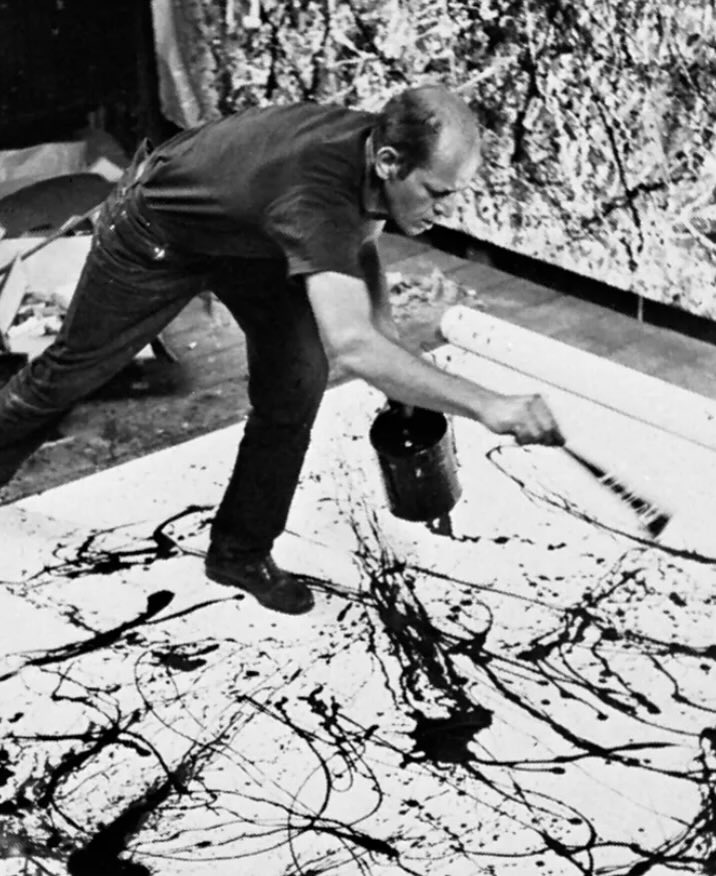
Breakthrough And The Drip Technique And Jackson Pollock
The early 1940s marked a significant turning point for Pollock. After struggling with alcoholism and working through various styles, he began experimenting with what would eventually be called his “drip” technique.
Influenced by surrealism and psychoanalytic theory, Pollock laid his large canvases on the ground and used hardened brushes, sticks, and even basting syringes to pour, drip, and splatter paint onto them.
This method allowed him an unprecedented level of engagement with his work. He would often walk around the canvas, energetically adding layers of paint.
Jackson Pollock’s Rise To Fame
Pollock’s innovation did not go unnoticed. By the mid-1940s, he caught the attention of Peggy Guggenheim, an important art collector and gallery owner.
She gave Pollock a contract that provided him with financial stability and his first solo show, which was held at her Art of This Century Gallery in New York City.
Pollock’s fame continued to grow, particularly after a four-page spread in “Life” magazine in 1949 asked, “Is he the greatest living painter in the United States?” This publicity cemented his reputation, attracting both critical praise and public scrutiny.
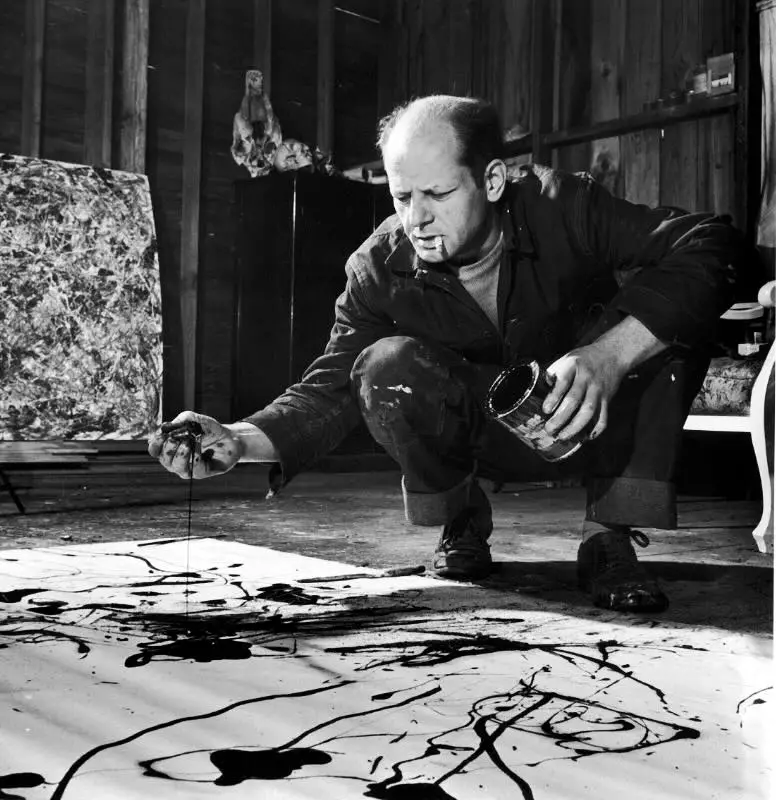
Jackson Pollock’s Struggles And Death
Despite his professional success, Pollock struggled with personal issues throughout his life. His marriage to artist Lee Krasner, who was also his biggest supporter, was tumultuous, exacerbated by his ongoing battle with alcoholism.
Pollock’s productivity and creativity waned in the 1950s as he battled his demons, and his life was tragically cut short when he died in a car crash in 1956 at the age of 44.
Jackson Pollock’s Legacy And Top Ten Works
Jackson Pollock’s legacy is characterized by his groundbreaking approach to painting and his role in developing the Abstract Expressionist movement. His works are celebrated for their complexity, depth, and unique beauty. Here are ten of Pollock’s most famous works:
“Mural” (1943) by Jackson Pollock
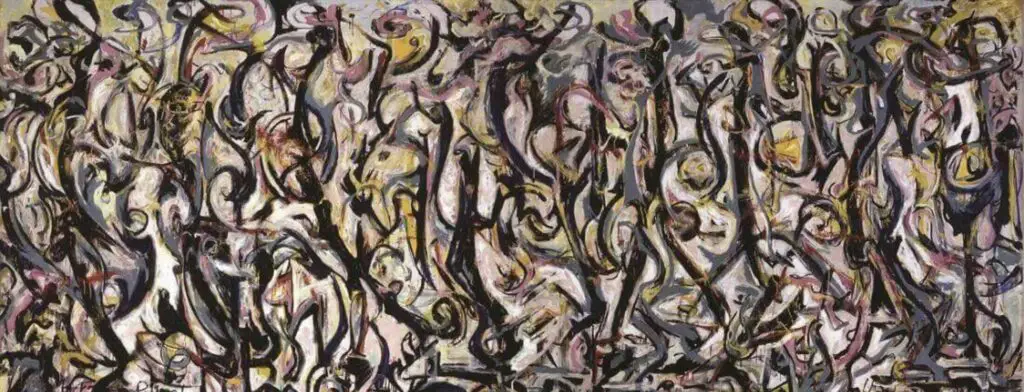
The Mural (1943), commissioned by Peggy Guggenheim for her townhouse, is massive and is often considered Pollock’s breakthrough in abstract painting.
“Number 1A, 1948” by Jackson Pollock
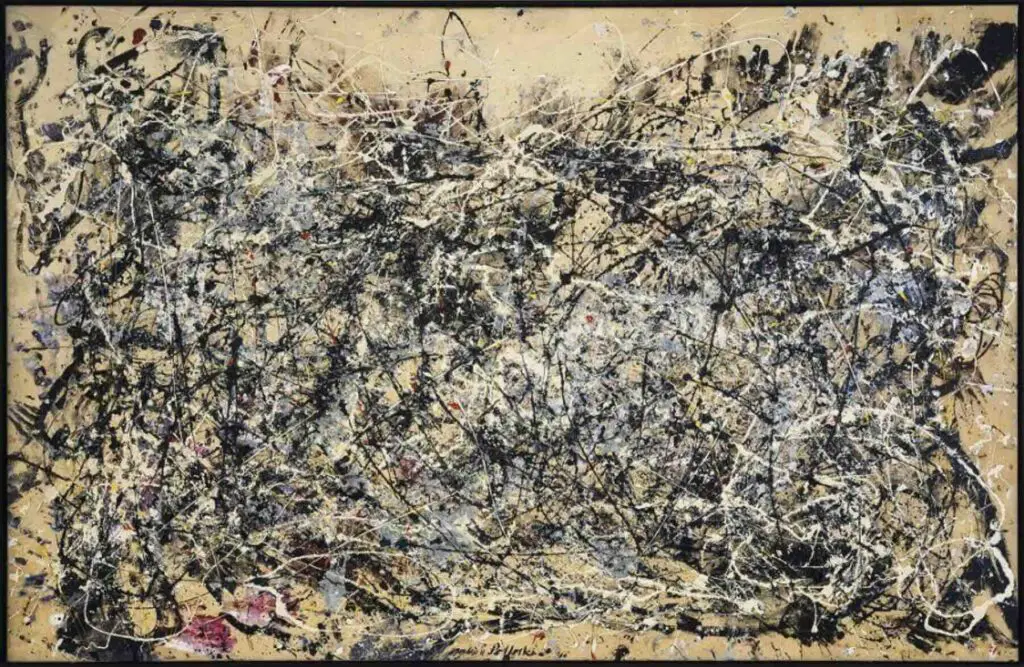
The Number 1A 1948 painting exemplifies his drip technique with its intricate, lace-like paint patterns, showcasing his control over chaos.
“Autumn Rhythm (Number 30, 1950)” by Jackson Pollock

Part of Pollock’s greatness lies in his ability to scale his pieces to enormous sizes while maintaining a balance between control and spontaneity. This clearly shows in the Autumn Rhythm (Number 30, 1950).
“Lavender Mist: Number 1” (1950) by Jackson Pollock

Lavender Mist: Number 1, 1950 is notable for its delicate color palette, juxtaposed with the vigorous application of paint.
“Convergence” (1952) by Jackson Pollock
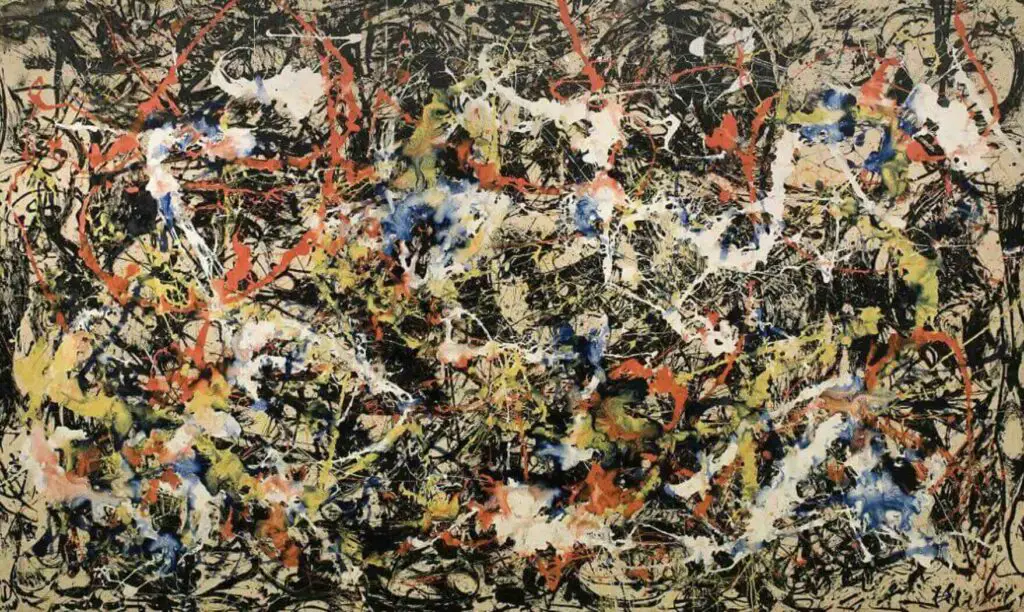
Convergence (1952) is a bold work of intense colors and thick paint layers, reflecting the depth of Pollock’s emotional and psychological state.
Blue Poles: Number 11 (1952) by Jackson Pollock

Blue Poles: Number 11, 1952. Initially titled “Number 11,” the work was renamed “Blue Poles” and is known for its height and the striking blue poles trailing it.
“One: Number 31” (1950) by Jackson Pollock
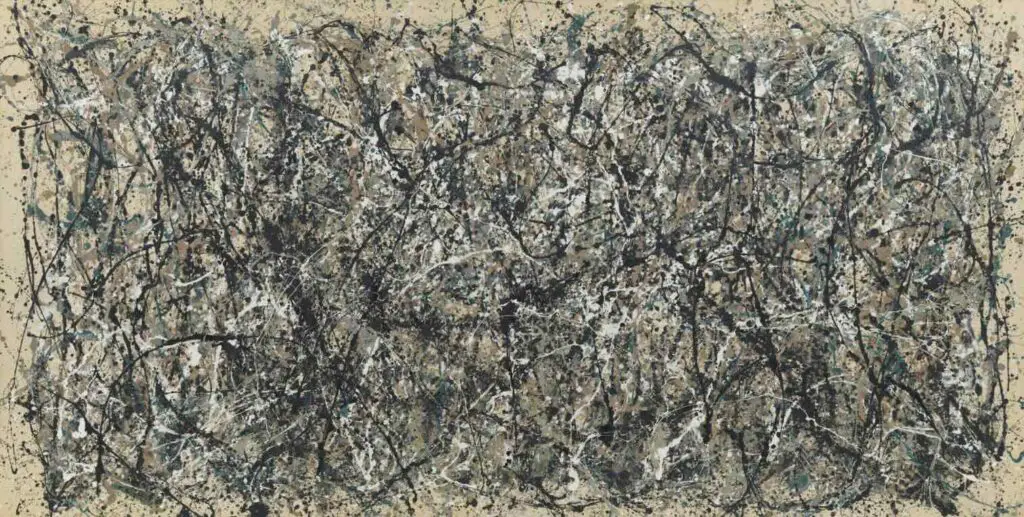
One: Number 31, 1950 is a large painting that is a stunning example of Pollock’s style, filled with energy and complexity.
“The Deep” (1953) by Jackson Pollock

The Deeo (1953) Illustrates a departure from his typical style, featuring a darker palette and a more reflective quality.
“Number 5” (1948) by Jackson Pollock
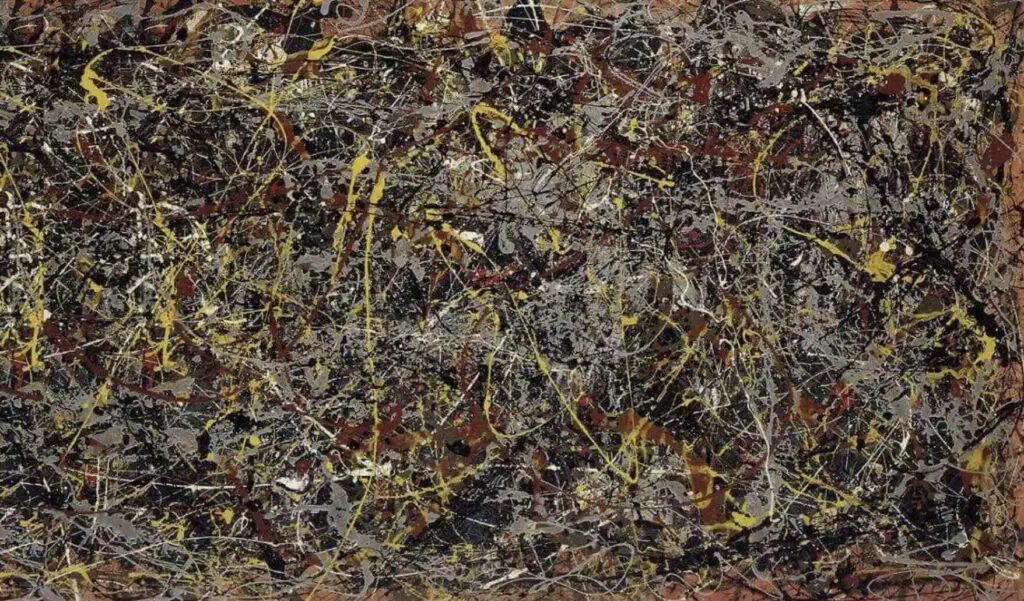
The Number5, 1948, is famous for its complexity; it reportedly became the most expensive painting ever sold at the time in a private sale.
“Number 17A (1948)” by Jackson Pollock
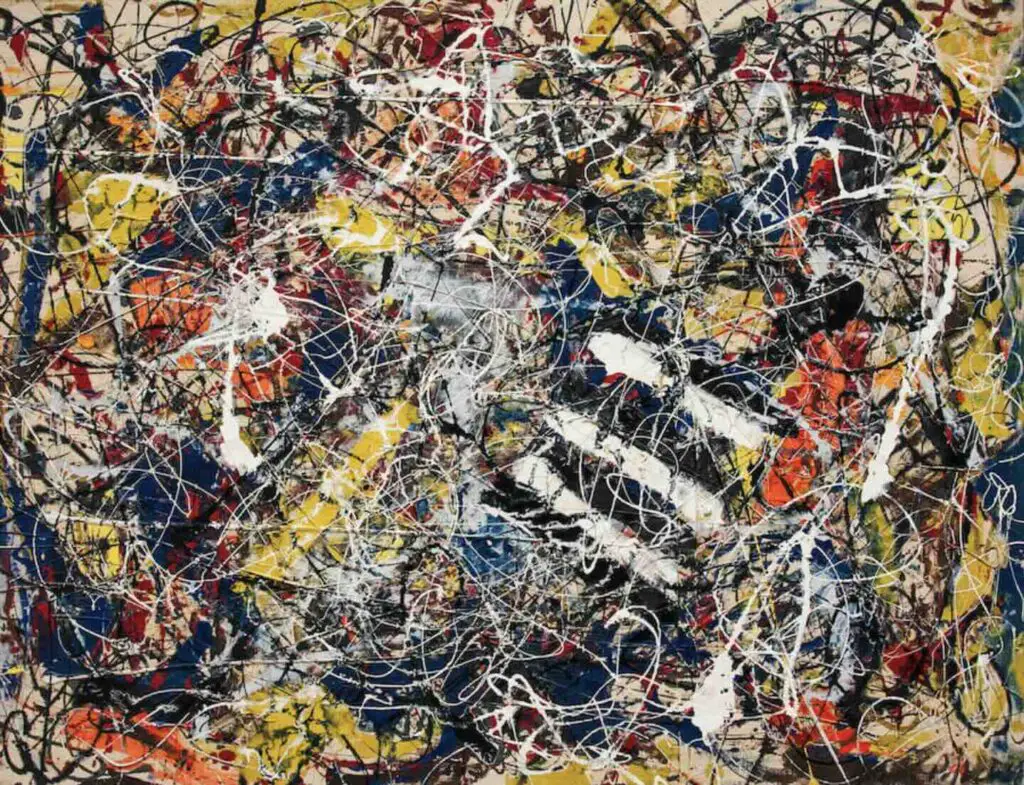
Number 17A, 1948 is a vibrant example of Pollock’s drip paintings, showcasing his technique of dynamic fluidity.
10 Reasons Why Jackson Pollock Remains A Beloved Figure In Modern Art
Jackson Pollock, a titan of modern art, continues to capture the imagination of art lovers and critics alike. His distinctive style and the emotional depth of his work have cemented his status as a critical figure in the abstract expressionist movement.
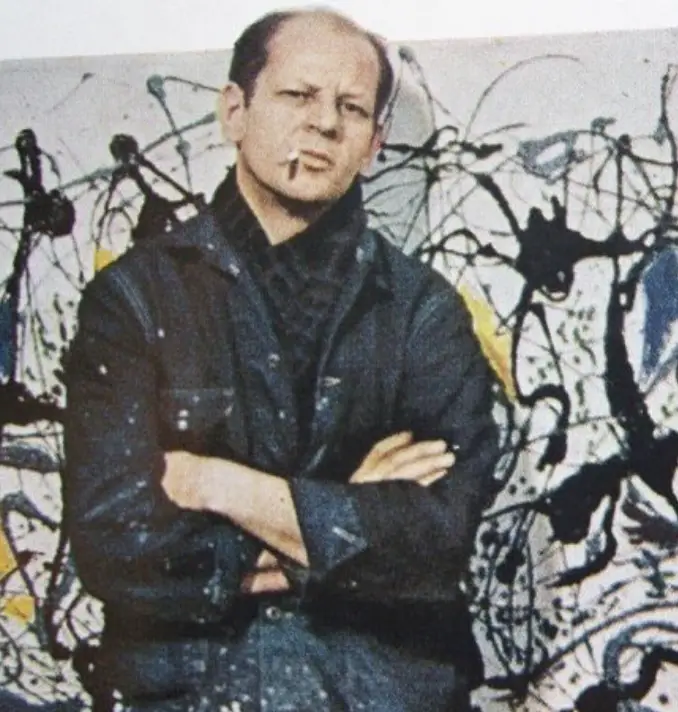
Here are ten reasons why Jackson Pollock remains a famous and beloved artist today:
Innovative Technique
Jackson Pollock’s revolutionary drip painting technique broke away from traditional art methods, providing a new way of engaging with the canvas and materials. His approach transformed the act of painting into a performance.
Emotional Depth
Each piece Pollock created is a visceral manifestation of emotion. Viewers are often drawn to his work’s intensity and palpable sense of feeling.
Unique Visual Language
Pollock developed a unique form of abstract expressionism, using lines, colors, and forms to create a complex visual language that speaks to many subconsciously.
Influence On Future Generations
Jackson Pollock’s work has inspired countless artists across various mediums. His influence is evident in the work of many contemporary artists who emulate his style and philosophy.
The Allure Of Chaos And Control
In Jackson Pollock’s paintings, viewers see the beauty of controlled chaos. His ability to harness disorder on the canvas, creating cohesive and compelling artworks, intrigues art enthusiasts.
Mystery And Interpretation
The abstract nature of Jackson Pollock’s work invites viewers to interpret it in multiple ways, often seeing different things upon each viewing. This mystery keeps his art fresh and continually relevant.
Iconic Status Of Jackson Pollock
Jackson Pollock’s life and persona have reached a mythic status, further amplified by his dramatic personal life and untimely death, which attract public interest and scholarly scrutiny.
Cultural Representation
Jackson Pollock often represents the freedom and innovation of the post-war American spirit, embodying the cultural zeitgeist of the mid-20th century.
Museum And Gallery Showings
Pollock’s artworks are a staple in major museums and galleries worldwide, ensuring that new generations of art lovers can experience his work firsthand.
High-Profile Endorsements
Jackson Pollock’s art has been celebrated in artistic circles and featured in popular culture, including movies, books, and documentaries, perpetuating his legacy and influence.
Jackson Pollock’s enduring popularity is a testament to his role as a pioneer who forever changed the landscape of modern art. His works continue to resonate, proving that true art transcends the era of its creation.
Listen To Our Podcast About Diving Deep Into Jackson Pollock’s Iconic Artistic Style
Below or By clicking here.

Anita Louise Art is dedicated to art education, great artists, and inspiring others to find and create their art. We love art that uplifts and inspires. #ArtToMakeYouSmile! #ArtToMakeYouHappy!
If you want to see any of my art, you can find out more by clicking here. If you are interested in what inspires me and my paintings, you can discover more by clicking here.
We have a free newsletter and would love you to be part of our community; you can subscribe to the newsletter by clicking here. If you have any questions, I would be happy to talk to you. You can reach me, Anita, by clicking here.
Subscribe to our Anita Louise Art YouTube Channel with great videos and information by clicking here.
Join us for our podcast “5 Minutes With Art.” Spend just 5 minutes a week with us to discover and learn about great art and artists. You can find out more about our podcast by clicking here.
Related Questions
Unleashing The Abstract: Can Jackson Pollock Draw?
Jackson Pollock is one of the most essential American artists who ever lived. Jackson Pollock and his artistic ability have always been debated, raising questions about what defines true artistic talent.
By clicking here, you can discover more by reading Unleashing The Abstract: Can Jackson Pollock Draw?
Decoding Jackson Pollock’s Fascination With Enamel Paint
Jackson Pollock, an iconic figure of the Abstract Expressionist movement, revolutionized the art world with his unconventional and groundbreaking painting techniques. One of his artistic choices is his preference for enamel paint. Read on; we will embark on a journey to understand the reasons behind Pollock’s fascination with enamel paint and explore its profound impact on his artistic process.
By clicking here, you can learn more by reading Decoding Jackson Pollock’s Fascination With Enamel Paint.
Jackson Pollock Convergence, 1952 – A Political Statement
What sets this masterpiece apart is its dual nature; it serves as a visual spectacle and a political statement. This work encapsulates Pollock’s own beliefs, using art as a medium to express his viewpoints. Additionally, the sheer scale of the painting contributes to its impact, making a statement through its size alone. Join me as we delve further into the fascinating intricacies of this remarkable artwork.
By clicking here, you can learn more by reading Jackson Pollock Convergence, 1952 – A Political Statement.

